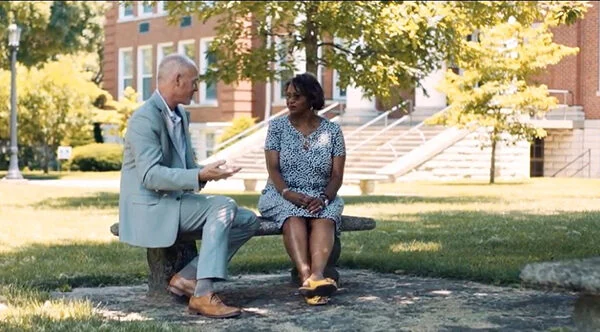[vc_row][vc_column][vc_column_text]
Empowering Veterans with Tailored Home Health Care & Technology
The Department of Veterans Affairs (VA) has become an unlikely and innovative pioneer in providing veterans with cost-effective, quality in-home care. Although the agency has long been mired in controversies surrounding its programs, particularly arbitrary caregiver dismissals, the home health services sector of the VA has long been touted as an overall success story.
As the director of comprehensive geriatrics and palliative care programs for the VA, Thomas Edes, says, “We’re working in this environment of challenging budget constraints, and at the same time, we’re a very mission-driven organization. Put those together, and what happens? That really pushes us to innovate.” The VA has been incredibly inventive in using healthcare technology to enhance its personalized medical care for veterans.
Advancements in Veterans’ Home-Based Care
This innovation has seen home-based primary care for veterans quadruple since 2000, and all VA medical centers throughout the US now have a palliative care program as well. The VA Medical Foster Home program care has expanded from a pilot to a national program, recognized in at least 45 states and providing veterans housing and in-home care.
These success stories are great news for veterans and a must for the Veterans Administration partially because the median age of a veteran is now 64, and the US aging veteran population is growing even faster than the senior civilian population. As veterans grow older, they experience various health conditions that demand personalized medical care from skilled home health care providers.
The Challenge of an Aging Veteran Population
It is not just the “newcomer” seniors straining the VA health care system. Nationwide, the 85-plus population is on track to increase by 70% from 2000 to 2020, according to the US Department of Health and Human Services. The US healthcare system’s overall unsustainability has forced the VA’s hand, and there is no more cost-effective way than through subsidized, at-home family and community-centred healthcare and technology to meet veterans’ care needs.
Revolutionizing Veteran Care With Telehealth Services
The Official Blog of the US Department of Veterans Affairs reports that Telehealth is revolutionizing veteran care and providing high-quality treatment for them.
The VA Video on Demand delivers convenient, accessible health care services, particularly to those 24-plus percent of veterans who live in rural and remote access locations. Telehealth is also essential for disabled veterans. Although a veteran might live in a city they might be unable to get to a medical center for an appointment. This is where the Telehealth system steps in.
The VA aims to create a safe and supportive environment for veterans by providing technology-based solutions such as Virtual Healthcare, Mobile Apps, Clinical Video Technology, and other telehealth services. These services provide convenience, reduce unnecessary hospital visits, and improve overall care.
Assisted Living Technologies for Veterans
Assisted living technologies for veterans include mobility equipment, an ever-expanding category including wheelchairs, all-terrain vehicles, exoskeletons, and in-home ceiling track mobility systems that continue to be refined and specialized to meet the individual veteran’s needs.
The Veterans Administration awards grants to develop technology to assist veterans and service members modify their homes. Adapted computer access and electronic aids to daily living and environment control units (personal assistants) provide customized interactive abilities for veterans.
Innovative Cognitive and AI Technologies for Veterans
Electronic cognitive devices help veterans who struggle with activities of daily living (ADL). These devices include personal digital assistants (PDAs), smartphones, pocket personal computers (pocket PCs) and, other handheld devices, global positioning systems (GPS), reminder watches, pagers with reminder features, and digital voice recorders.
Using these devices helps a veteran stay on schedule with medications and stay connected with family, friends, and their medical monitoring community. Those veterans with Post Traumatic Stress Disorder (PTSD) mental health problems are further helped with their ADLs when robots with artificial intelligence (AI) are introduced into their environment.
These AI “tech bots” can read human facial expressions and identify when a veteran is feeling particularly stressed, isolated, angry, or depressed. The robot can upload the information to the veteran’s caregivers, thus alerting them to the need for human intervention.
Wearable sensors can also alert a caregiver or health care professionals when vital signs are outside of a normal, healthy range. These assistive technologies can help veterans maintain a sense of independence and allow them to live comfortably in their homes.
Transportation and Recreation Support for Disabled Veterans
The VA will provide a payment to disabled veterans toward purchasing a car or other transportation and additionally will pay for adaptive equipment, repair, reinstallation or replacement of necessary equipment due to disability.
If a veteran has lost the use of at least one foot, or hand, or has a permanent impairment to their vision or severe burn injuries or immobile joints that limit mobility, the VA will help fund the adaptation of the vehicle to make it fully operational to the veteran. The same holds for some sports and recreation equipment.
Navigating Benefits and Seeking Professional Advice
While the latest technology benefits all seniors opting to age in place, the veteran community is significantly helped. Many veterans would like the luxury of aging without combat or noncombat injury inherent to military service.
Some of the aging-in-place obstacles they must overcome are extremely commensurate with the injuries (psychological and physical) they have endured. Navigating the benefits available to a senior veteran is complicated if you are not well-versed in the process. Enrolling in the correct program and receiving benefits can also be lengthy, so it is best to seek professional advice before wasting valuable time.
If you have questions or would like to discuss your situation, please don’t hesitate to contact us at 859-544-6012. Our team is committed to helping our veteran community navigate the aging-in-place process and ensure they receive all the benefits they deserve. We thank you for your service and are here to support you every step of the way. Let us help make your aging-in-place journey more accessible and more enjoyable.[/vc_column_text][/vc_column][/vc_row]


